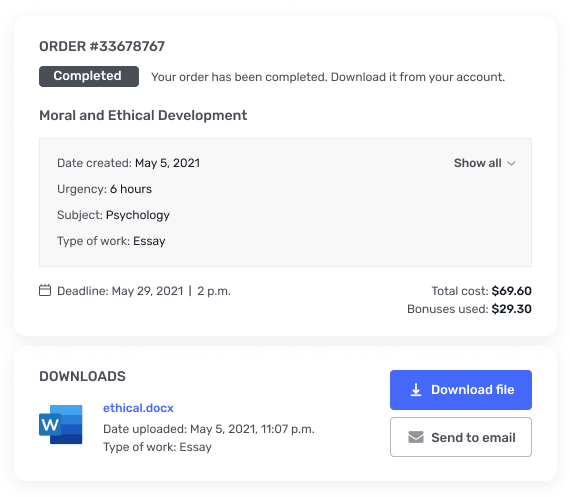Econ 132 – A project that incurs costs in early years and yields benefits in later years
QUESTION 1
1. A project that incurs costs in early years and
yields benefits in later years
has been estimated to have costs just equal to
benefits, in present value
terms. The project would be reevaluated as
having greater benefits than costs if…
the
time discount rate were lowered.
the time discount rate were raised.
either
a or b was true.
Neither
a or b was true.
1 points
QUESTION 2
1. Cost effectiveness analysis is appropriate
when
a
particular project is to bejustified.
a
project’s goal has already been decided.
the costs of achieving a goal are hard to quantify.
a
budget of predetermined size has been authorized.
1 points
QUESTION 3
1. If we grow concerned that future generations
will be worse off than we
are because of the deterioration of the
environment, we may
assess projects using a higher rate of time discount.
assess projects using a lower rate of time discount.
use a lower risk discount rate in calculating the
certainty equivalents
of future costs and benefits.
use a higher risk discount rate in calculating the
certainty equivalents
of
future costs and benefits.
1 points
QUESTION 4
1.
Which of the following is an
implication of the Tiebout model?
Local government should provide public goods characterized by a
weak tax–benefit linkage.
Local government should provide public goods characterized by a
strong tax–benefit linkage.
Local governments should provide public goods regardless of
tax–benefit linkage.
State or federal governments should provide public goods with
strong tax–-benefit linkages,
1 points
QUESTION 5
1.
Which of the following is NOT a
limitation of the Tiebout model?
Mobility; many people are not perfectly mobile.
Competition; people may not have perfect information about the
benefits and taxes where they live.
Financing; lump-sum taxation is very rarely used.
All of the answers are the limitations of the Tiebout model.
1 points
QUESTION 6
1. Which
of the following is consistent with the assumptions in the Tiebout model?
Local governments are funded by state sales taxes
Public parks in one town also benefit neighboring towns.
Policing in one town does not affect criminal behavior in another
town.
Both A and C are correct.
1 points
QUESTION 7
1. According
to the Tiebout model, how would you respond if you didn’t like the level of
services provided in your community?
You’d use voter initiatives to change the level of services.
You’d vote out the local officials in the next general election.
You’d vote out the local officials by calling a recall election.
You’d move to a different community.
1 points
QUESTION 8
1. The
Tiebout model is most likely to apply to:
international alliances
the state government.
the national government.
the city government.
1 points
QUESTION 9
1.
If an insured patient pays the
full cost of the first $5,000 of medical expenses per year, what is that $5,000
amount called?
copayment
Premium
coinsurance
deductible
1 points
QUESTION 10
1. Which
of the following can be said about the international comparison of per pupil
spending and educational attainment?
US states generally spend less per student on educations that
Western European Nations
The United States spends much more per student than most Western
European Nations
U.S. eighth graders are no more proficient in math and science
than students in much less wealthy countries.
Both B and C are correct.
1 points
QUESTION 11
1.
Suppose government subsidized
the consumption of private as well as public education (instead of public
education alone). The subsidy would:
shift the private demand curve to the left.
shift the private demand curve to the right.
shift the private supply curve to the right.
shift the private supply curve to the left.
1 points
QUESTION 12
1.
Which of the following is NOT a
problem of school vouchers?
consumer sovereignty
excessive school specialization
school segregation
inefficient and inequitable use of public resources
1 points
QUESTION 13
1.
One of the
purposes of public education is to improve upward mobility. According th
Stiglitz
Upward mobility in the US is greater in the US
than in most European countries
Upward mobility in the US is about the same in
the US than in most European countries
Upward mobility in the US is less in the US
than in most European countries
Not something educators should worry about
1 points
QUESTION 14
1. Which
of the following provides insurance only against injuries and problems that end
a worker’s career?
unemployment insurance
Disability Insurance that is Social Security (DI)
workers’ compensation
Medicare
1 points
QUESTION 15
1. Suppose
you foresee two possibilities for your health: You will either get a brain
tumor or will have nothing more than a bout with the flu. These two
possibilities are considered:
moral
hazards.
self-insurance.
consumption.
states
of the world
1 points
QUESTION 16
1. People
buying insurance aim to shift consumption from states of the world when
consumption is ___________ to states when consumption is ___________ and
marginal utility is relatively ___________.
high; low; low
high; low; high
low; high; high
ow; high; low
1 points
QUESTION 17
1.
If there is a
1% chance that you will be in an auto accident that will cost you $100,000 in
lost income, medical expenses, and liability, and your insurance company
charges a 10% risk premium, an insurance policy giving you full coverage would
likely cost
$10,000
$1,000
$1,100
$500
1 points
QUESTION 18
1. Suppose
that I pay into a plan by buying assets with the expectation that I can live on
the accumulated assets when I retire. This is an example of:
workers’ compensation.
a funded retirement plan.
an unfunded retirement plan.
none of the above are correct
1 points
QUESTION 19
1. Which
of the following is a reason there is redistribution from those born later to
those born earlier?
Social Security benefits diminish with age, and those born
earlier lived longer.
Those born earlier paid into the system for only part of their
lives but received benefits throughout their retirement.
The size of the payroll tax has risen significantly over the
years.
Both B and C are correct.
1 points
QUESTION 20
1.
For unemployment insurance,
which of the following is generally true?
Benefits received are based on the average earnings in the
recipient’s state.
Benefits received are based on the previous earnings of each
recipient.
The replacement rate is lower for low-income workers than for
high-income workers.
Both B and C are correct.
1 points
QUESTION 21
1. Which
of the following is a criterion workers must meet to be eligible for
unemployment benefits?
They cannot have quit.
They cannot have been fired for poor performance or incompetence
They
must be actively looking for a new job.
All of the above are correct
1 points
QUESTION 22
1. Which
of the following is NOT true with respect to disability insurance (DI)?
DI claims are processed promptly and carefully, with decisions
rarely being overturned by the courts
If granted, workers receive the same amount they would have
received if they retired at the Full Benefit Age of 66 under the Social
Security program
DI program provides insurance against career-ending
disabilities.
DI benefits are largely untaxed.
1 points
QUESTION 23
1.
Which of the following is true?
The unemployment insurance program is fully experience-rated.
The unemployment insurance program is partially
experience-rated.
Firms pay an additional tax each time they lay off a worker.
Both A and C are correct.
1 points
QUESTION 24
1.
Which of the following is true
with respect to workers’ compensation?
When there is a qualifying injury, benefits are paid out,
whether the injury was the worker’s or the firm’s fault.
When there is a qualifying injury, benefits are only paid out if
the injury was the firm’s fault, as established in court.
When there is a qualifying injury, benefits are only paid out if
the injury was the firm’s fault, as established by a committee paid by the
federal government.
When there is a qualifying injury, benefits are only paid out if
the injury was the worker’s fault.




